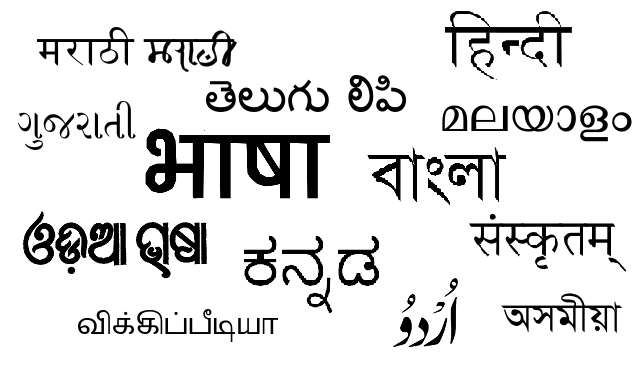In all the analyses of the policy recently approved by the Union cabinet, one element that has not been highlighted enough is its focus on the promotion of Indian languages, arts and culture.
By Devender Singh Aswal
IT is language what distinguishes us and makes the growth of civilisation possible. In the words of Noam Chomsky, an acclaimed linguist.
“a language is not just words. It’s a culture, a tradition, a unification of a community, a whole history that creates what a community is. It’s all embodied in a language”.
The National Education Policy (NEP) makes an allusion to 64 kalas, mentioned in the Kadambini of Vanbhatt, to underline India’s rich art heritage. Language is closely and inextricably intertwined with arts and culture. Culture is likened to a house and the language the door.
India has lost 220 languages in the last 50 years alone and UNESCO has declared 197 Indian languages as “endangered”. The 22 languages of the Eighth Schedule of the Constitution of India are also facing serious difficulties, on a varying scale on many fronts. The NEP, therefore, emphasises that languages must have consistent official updates to their vocabularies and dictionaries. Such updating of vocabularies is carried out by many countries around the world in languages such as English, French, German, Hebrew, Korean, and Japanese. India has been rather tardy in producing such learning and print materials and dictionaries to help keep our languages optimally vibrant.
In line with the recommendations of the Kothari Commission, the NEP underlines the need for early implementation of the three-language formula to promote multilingualism. The policy lays down a broad architecture to this end for setting up strong departments and curricula in Indian languages, comparative literature, creative writing, arts, music, philosophy, etc.
Read Also: New Education Policy: Scoring A Hit?
The objective is to develop and launch suitable programmes across the country, including four-year BEd dual degrees in these subjects. This will help develop a large cadre of high-quality language teachers as well as teachers of arts, music, philosophy and writing needed around the country to implement the policy.
The National Research Foundation will fund quality research in all these areas. Outstanding local artists and craftspersons will be hired as guest faculty to promote local music, art, languages and handicrafts, and ensure that students are aware of the culture and local knowledge, or the lok vidya. Higher Education Institutions (HEIs) will be encouraged to use the mother tongue or local language as a medium of instruction, or to offer teaching bilingually. Private HEIs too will be encouraged and incentivised to fall in line.
Translation of Indian languages has been a much neglected area despite its multiple benefits in building bridges of understanding, interaction and knowledge sharing. The NEP underlines the need for establishing quality programmes and degrees in Translation and Interpretation, Arts and Museum Administration, Archaeology, Artifact Conservation, Graphic Design and Web Design within the higher education system. An Indian Institute of Translation and Interpretation will be established for creating a regular pool of experts in translation and interpretation. Students would be encouraged to tour different parts of the country to get first-hand knowledge about the rich diversity of India, a practice in vogue in the Navodaya Vidyalayas.
Sanskrit will be mainstreamed and Sanskrit universities too will move towards becoming large multi-disciplinary institutions of higher learning. Sanskrit teachers will be professionalised in large numbers across the country through the offering of four-year integrated multi-disciplinary BEd dual degrees.
Institutes and universities will be expanded for study of all classical languages and literature, with efforts to collect, preserve, translate and study the tens of thousands of manuscripts that have not yet received due attention. All Indian language institutes and departments across the country will be significantly strengthened.
Further, it envisages setting up of a new institution for all Indian languages. National Institute (or Institutes) for Pali, Persian and Prakrit will also be set up within a university campus. Similar initiatives will be carried out for institutes and universities studying Indian arts, art history and Indology.
Research for outstanding work in all these areas will be supported by the National Research Foundation. Efforts will be made to preserve and promote all Indian languages including classical, tribal and endangered languagess. Their associated arts and culture will be documented through a web-based platform. Scholarships will be established for people of all ages who study Indian languages, arts and culture with local masters and/or within the higher education system. Proficiency in Indian languages will be included as part of the qualification parameters for employment opportunities.
Such a robust futuristic framework for promotion and strengthening of Indian languages should set at rest any misgivings that any language will be forcibly thrust on the people. The linguistic diversity of India is an integral part of our nationalism unlike the countries founded on the principle of one language or religion. Promotion of Indian languages will blend linguistic pride with national vision, promote faster learning and revamp the usage and the vibrancy of all Indian languages and multilingualism.
—The writer is ex-Additional Secretary, Lok Sabha and parliamentary expert and has serviced the Public Accounts Committee of Parliament


